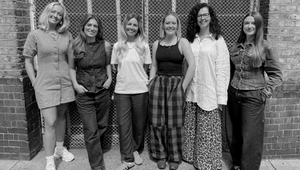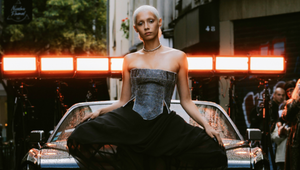
If the Shoe Fits: Finding the Balance between Exclusivity and Inclusivity

The most popular brands are always seeking ways to build connections with their audience and continuously generate brand love, but within the world of fashion, the goalposts are ever-moving. For a long time, fashion has taken on more meaning than the clothes that sit on our bodies, which are simply representations of our ideals, morals and values. As a result, desirability has been one of the most important factors in consumer decisions - how much do I really want this? Where some build demand through limited supply and others look to build their consumer base by being a visible representation of what the world looks like, there’s a constant conflict between ‘inclusive’ and ‘exclusive’ as a goal for fashion brands.
Appealing to the masses
More of a spectrum than a binary system, there are brands who operate on the sliding scale, and perform better than others, due to their ability to understand what a consumer needs in order to view them as desirable enough to purchase. Take Savage X Fenty, which pushed the needle on what inclusivity meant in a fashion space, representing a diverse range of talent in every aspect of what they did. Although certainly helped by the superstar status of Rihanna as founder and ambassador, what helped the brand truly break through was the red thread of inclusivity that ran through everything they did. Whether it was widening the range of makeup products to represent more skin tones or having a much larger sizing range with their underwear, Fenty changed who was typically seen using these types of products. These changes generated desirability, particularly from those who didn’t previously feel valued by brands in the fashion industry.
On the other hand, we have Corteiz, a label that rejects mass inclusion at every opportunity. Whether it’s the password-locked website, private Instagram or shock drops, there’s certain people the CRTZ brand speaks to, and certain people it really doesn’t. It was interesting to see Nigerian rapper OdumoduBlvck flex on his Instagram story as he posed with the then-unreleased CRTZ Air max 95, letting people know that more recognisable rappers like Wizkid and Burna Boy didn’t, and couldn’t, have these shoes. The community the Corteiz brand has been able to build means that the community feels close to the brand and its founder, Clint419. So much so that designers got the chance to participate in an open design competition for the brand, after a twitter user deemed the football shirt design that Corteiz was to release 'lazy'.
A brand whose identity is sown with the idea of exclusivity is French luxury house Hermès. Their Birkin bags, although not modestly priced at all, are a statement of status and access more so than of wealth: it’s not possible to just walk into a Hermès store and buy a Birkin bag, you must get put on a waiting list, that can only happen when you have significant purchase history with a particular boutique store. For the brand, the exclusivity of this product has served well not only financially - the most ever expensive handbag was a Birkin, sold for $450k - but has allowed them to find their place culturally. If you’re not being consulted by experts on TikTok on how to claim an authentic Birkin, then you might’ve heard Drake talk about his extensive collection, which he one day hopes to gift to a partner of his.
The desire to belong
Regardless of what side of inclusive vs exclusive see-saw some of our favourite brands sit on, behind it all there’s an audience that wants to feel part of something. Not necessarily in a snobbish way, but it’s something that sits deep in us as human beings, the desire to be an important part of a well-oiled machine, helping it move forward day by day. No wonder that fit check videos have become a staple part of TikTok, with the #FitCheck hashtag accumulating over 24bn views on the app. Rather than what people are wearing, the videos give cues to their character, perhaps the kind of music they’re into and more.
As we look towards the upcoming Fashion Week in September, how brands, and the whole programme shapes up looks very different from how it did 10-15 years ago. Rather than presenting itself as a high table that only the “elites” have access to, it seems even with a fringe interest in fashion, you can create a rewarding Fashion Week experience for yourself - without being seen front row at a Louis Vuitton show. Whilst Paris is certainly leading the way in reimagining the Fashion Week experience for the everyday lover of Fashion, that irresistible appeal remains about those money-can’t-buy experiences that allows it to appeal to those who are still tempted by the exclusivity of it all.
A multitude of experiences
Physical experiences will always continue to play an important role in creating inclusive experiences for Fashion brands - sometimes without having a particular push towards a product. Take Moncler’s ‘The Art of Genius’ event, which was worth its weight in gold in creating talkability, but didn’t look to sell products, rather stay in the minds of attendees as one of the more memorable events they were a part of. Similarly, Jacquemus’ pop up in Selfridges focuses more on the aesthetics of the activation, allowing it to be something that’s shareable on TikTok, and working as a perfect backdrop for a new Instagram picture too. Whilst many of the guests aren’t looking to buy the new Jacquemus bag that was on offer, it serves as an invitation, an inclusive way to be part of the Jacquemus world, without having to feel the pressure of having to part with large sums of money.
And like everything that revolves around and contributes to popular culture, there’s now a digital spin that must be considered, happening online, bringing in a wider community that cannot necessarily physically participate. AI Fashion Week is now a real thing, Nike are experimenting in the Web3 scene and there’s a plethora of people who still have fashion related NFTs in cryptocurrency wallets they have probably forgotten the passwords for. Whilst not much has yet taken off, it has invited those with interests away from fashion to join the fashion conversation, whether they’re tech enthusiasts or looking to make some money from the excitement around the unknown.
It seems that with Fashion Week as one of the pinnacles of the overall fashion calendar, brands are beginning to lean into the direction the fashion world seems to be moving towards, creating a multitude of experiences that invites a select crowd (exclusive) to be part of the brand’s world (inclusive). Take Chanel, Jean Paul Gaultier, Supreme, they all started out by speaking to a certain community, and have continued to speak to that community, building from the inside out, rather than trying to invite in consumers whose interests aren’t aligned with their initial community.
Even with the most exclusive brands, what lies at the heart of consumer interest is still a community that may relate with each and not necessarily even to owning the product. Talkability is a currency in itself, and consumers being able to see themselves in your brand is what’ll help it stand the test of time, especially if as a heritage brand you begin to invite a newer, more technologically savvy and financially stripped audience into your world.















